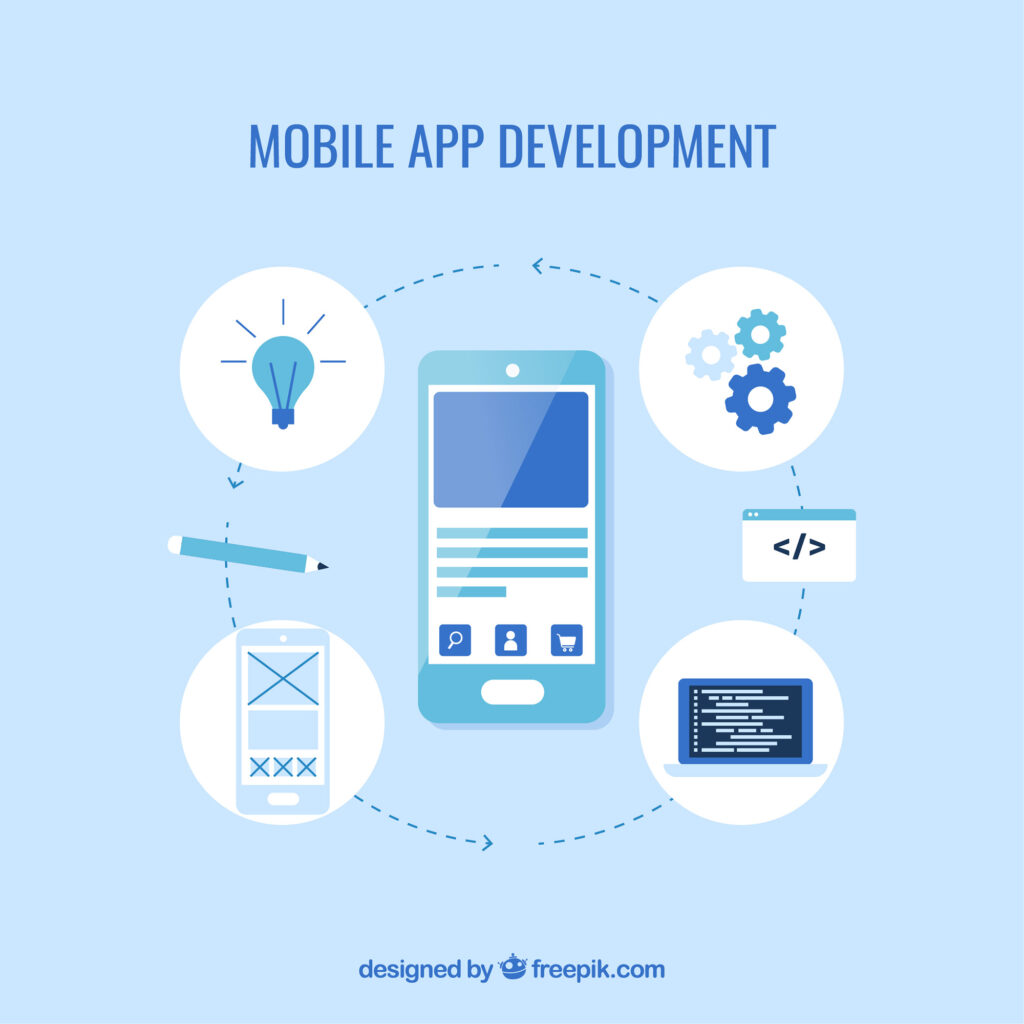
Steps involved in development of a mobile application
- Ion Sravan
- April 25, 2023
- Uncategorized
- 0 Comments
Steps involved in development of a mobile application

Mobile applications have become a vital part of our daily lives, and the demand for them is increasing day by day. If you’re planning to develop a mobile application, it’s important to understand the steps involved in the development process. In this blog post, we will discuss the steps involved in the development of a mobile application.
- Define your app idea
The first step in the development of a mobile application is to define your app idea. You need to have a clear understanding of the problem your app is solving and how it will benefit your target audience. This step involves market research, competitor analysis, and user persona development.
- Create a wireframe and design
Once you have a clear understanding of your app idea, the next step is to create a wireframe and design. A wireframe is a visual representation of your app’s layout and functionality, while the design includes the user interface (UI) and user experience (UX) design. This step involves creating a prototype of your app and getting feedback from stakeholders and users.
- Develop the app backend
After the wireframe and design have been finalized, the next step is to develop the app backend. The backend is the server-side of your application that connects your app to the database and other external services. This step involves developing the app’s architecture, setting up servers, creating APIs, and integrating third-party services.
- Develop the app frontend
Once the backend is developed, the next step is to develop the app frontend. The frontend is the client-side of your application that users interact with. This step involves developing the app’s features, integrating the UI and UX design, and ensuring that the app works smoothly across different devices and platforms.
- Testing and quality assurance
After the app frontend and backend are developed, the next step is to test the app and ensure that it meets the quality standards. This step involves performing unit testing, integration testing, system testing, and acceptance testing. It also involves fixing bugs, improving app performance, and ensuring that the app is secure and reliable.
- Deployment and maintenance
Once the app is tested and approved, the final step is to deploy the app to the app store or enterprise distribution channels. This step involves creating an app store account, submitting the app for review, and ensuring that the app meets the app store’s guidelines. After deployment, the app requires maintenance to ensure that it continues to function properly. This step involves monitoring the app’s performance, fixing bugs, and updating the app to meet user demands.
In conclusion, developing a mobile application involves a series of steps that need to be followed to ensure that the app meets the user’s requirements and quality standards. From defining the app idea to deployment and maintenance, each step is crucial in the development process. By following these steps, you can develop a high-quality mobile application that meets the needs of your target audience and helps you achieve your business objectives.
For More Information Contact App Development Company
Related Posts
- Ion Sravan
- August 4, 2022
7 Things you should know about SAAS
7 Things you should know about SAAS Despite the fact that it has been in use for years, the ter ..

- Ion Sravan
- May 11, 2023
Top App Development Companies in Vijayanagaram: A Comprehensive Guide
Top App Development Companies in Vijayanagaram: A Comprehensive Guide Introduction: Vijayanagar ..




